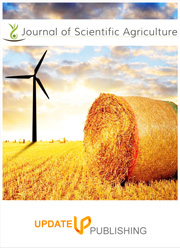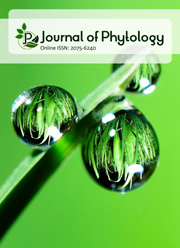Salinity influences physiological traits of seven Sesame (Sesamum indicum L.) varieties
DOI:
https://doi.org/10.25081/jsa.2017.v1.59Keywords:
ABA, DCPIP, RuBb carboxylase, salinity stress, sesame, foliar nitrogen, photosynthesisAbstract
In the present investigation a pot culture experiment was conducted in order to estimate the effects of salt stress on some physiological traits in seven sesame varieties like PAIYUR–1, SVPR–1, TMV–3, TMV–4, TMV–5, VIR–1 and VIR–2. Young and fully matured leaves were taken from control and salinity treated plants on 15th Days After Treatment (DAT), 30th (DAT) and 45th (DAT) for all the experiments in different salinity (NaCl) concentrations of control, 40mM, 80mM, 120mM.During the experiments of photosynthetic enzymes, foliar nitrogen and ABA content were measured. Lower rate of decreased photosynthesis, photosynthetic enzymes activity, foliar nitrogen and ABA content was increased with increasing salinity level in leaves of all the seven sesame varieties on all the sampling days. On 45th DAT, significantly higher enhancement of photosynthetic enzymes activity, foliar nitrogen, ABA content was observed in TMV-3 with 120mM salinity by relative to control plants while lower enhancement was noticed in PAIYUR-1 with 120mM salinity by compared to control plants. Moderate enhancement of photosynthetic enzymes, foliar nitrogen, ABA content was monitored in the variety VIR-2 with 120mM salinity on 45th DAT compared to control plants. TMV-3 exhibited higher adaptive potential under salinity stress as judged by increased photosynthetic rate and activities of photosynthetic, foliar nitrogen, higher accumulation ABA when compared to variety TMV-4 and PAIYUR-1 was closely followed by VIR-1. Variety VIR-2 was followed by SVPR-1 and TMV-5.



 .
.